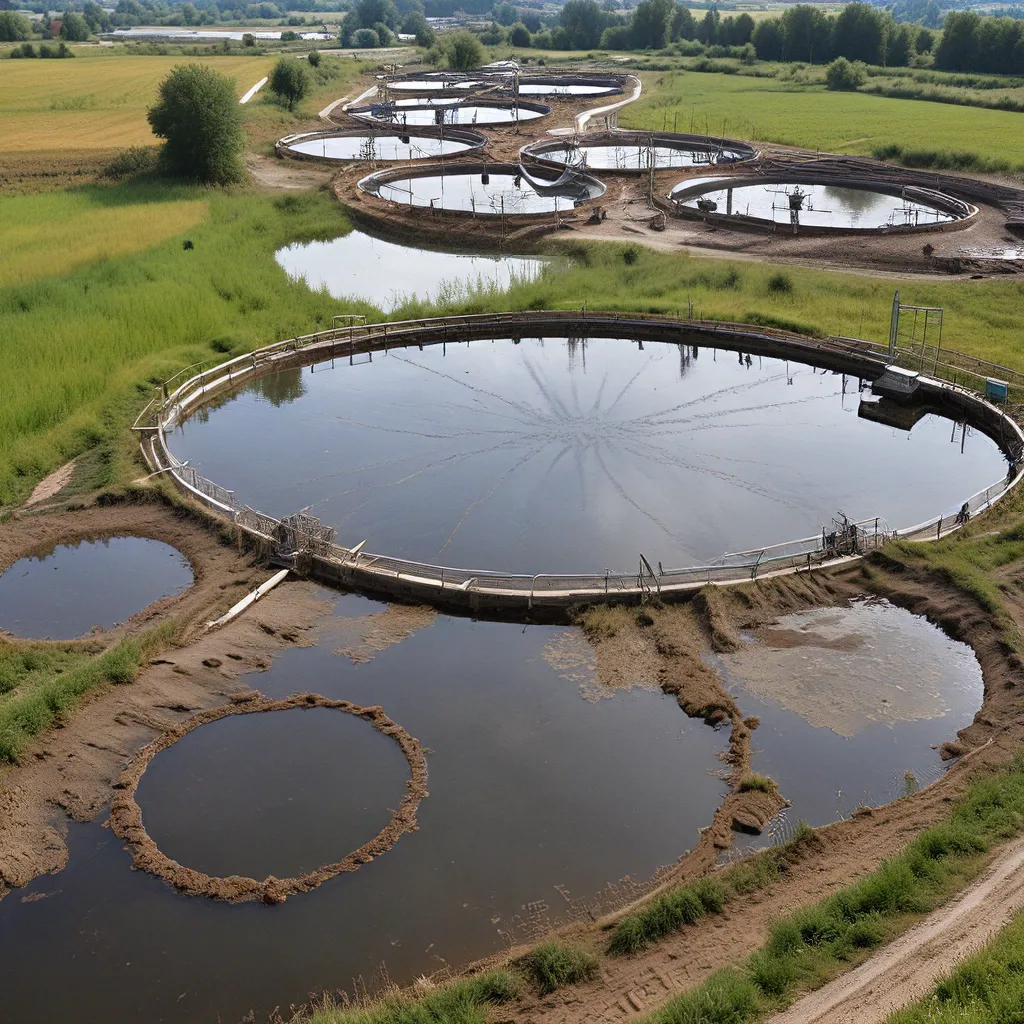
As an environmental enthusiast and someone who’s deeply fascinated by the intricacies of the natural world, I’ve always been intrigued by the incredible potential of wastewater treatment. It’s not just about cleaning up our dirty water – it’s about tapping into the extraordinary capabilities of microscopic organisms to create a more sustainable future.
In this article, I’ll take you on a journey through the realm of microbial processes and how they are revolutionizing the way we approach wastewater treatment, bioproducts, and bioenergy. Prepare to be amazed by the hidden gems that lie within our wastewater streams!
Unlocking the Circular Bioeconomy
The concept of the circular bioeconomy has been gaining significant momentum in recent years, and for good reason. It’s a revolutionary approach that seeks to harness the power of biology to create a more sustainable and regenerative economic model.
At the heart of this circular bioeconomy lies the wastewater treatment industry. Instead of simply treating wastewater and disposing of the byproducts, this forward-thinking approach recognizes the inherent value in these waste streams. By leveraging the incredible capabilities of microorganisms, we can transform these seemingly useless resources into a treasure trove of bioproducts and bioenergy.
Recent research from the White House has highlighted the immense potential of the circular bioeconomy, with the goal of establishing the United States as a global leader in this transformative field.
Harnessing the Power of Microbes
Now, let’s dive deeper into the fascinating world of microbial processes and how they are revolutionizing the wastewater treatment industry.
Imagine a microscopic army of hardworking bacteria and other microorganisms, tirelessly breaking down and transforming the organic matter in our wastewater. These unsung heroes are the backbone of advanced wastewater treatment systems, and their capabilities go far beyond just cleaning up our dirty water.
Emerging research has shown that by optimizing and leveraging these microbial processes, we can unlock a treasure trove of valuable bioproducts and bioenergy. From bioplastics and biofuels to specialized biochemicals and soil amendments, the possibilities are truly endless.
It’s a fascinating process to witness. These microscopic workhorses break down complex organic molecules, extracting the energy and nutrients trapped within. They then use these building blocks to create a wide array of useful compounds, all while generating renewable energy in the form of biogas and biomass.
The Power of Biogas and Biomass
One of the most exciting aspects of harnessing microbial processes in wastewater treatment is the potential for biogas and biomass production. These renewable energy sources can be used to power the treatment facilities themselves, reducing their environmental footprint and contributing to the circular bioeconomy.
Studies have shown that anaerobic digestion, a process driven by specialized microorganisms, can extract methane-rich biogas from the organic matter in wastewater. This biogas can then be used to generate electricity, heat, or even be upgraded and injected into natural gas pipelines.
But the benefits don’t stop there. The microbial processes also produce nutrient-rich biomass, which can be used as a valuable soil amendment or even as a feedstock for the production of biofuels and other bioproducts. It’s a truly remarkable example of how we can close the loop and create a sustainable, circular system.
Realizing the Potential of Bioproducts
As I mentioned earlier, the potential for bioproducts derived from wastewater treatment is truly staggering. Imagine a world where the byproducts of our water treatment processes are transformed into a wide array of valuable, sustainable products – from bioplastics and specialty chemicals to soil conditioners and fertilizers.
This is where the circular bioeconomy really shines. By leveraging the power of microbial processes, we can extract and refine a diverse range of biobased materials that can replace their fossil-fuel-derived counterparts. This not only reduces our reliance on finite resources but also creates new economic opportunities and drives innovation.
Companies like Alpha Wastewater are at the forefront of this revolution, pioneering advanced wastewater treatment technologies that maximize the recovery and conversion of these valuable bioproducts. It’s an exciting time to be in the industry, as the boundaries between waste management and sustainable manufacturing continue to blur.
Embracing the Future of Wastewater Treatment
As we look to the future, it’s clear that the circular bioeconomy and the power of microbial processes will play a crucial role in shaping the way we approach wastewater treatment. No longer is it simply about cleaning up our dirty water – it’s about harnessing the incredible potential of these microscopic allies to create a more sustainable, regenerative, and economically viable future.
The journey ahead may not be without its challenges, but the rewards are truly transformative. Imagine a world where our wastewater streams are not just a liability, but a valuable resource – a treasure trove of bioproducts and bioenergy that can power our homes, fuel our vehicles, and nourish our soils.
It’s an ambitious vision, to be sure, but one that I believe is well within our grasp. With continued research, innovation, and the unwavering commitment of industry leaders like Alpha Wastewater, we can unlock the full potential of the circular bioeconomy and usher in a new era of sustainable wastewater management.
So, as you flush your toilet or watch the water swirl down the drain, take a moment to appreciate the incredible journey your wastewater is about to embark on. Who knows what amazing transformations await, as the microscopic heroes of the wastewater treatment world get to work, creating a brighter, more sustainable future for us all.